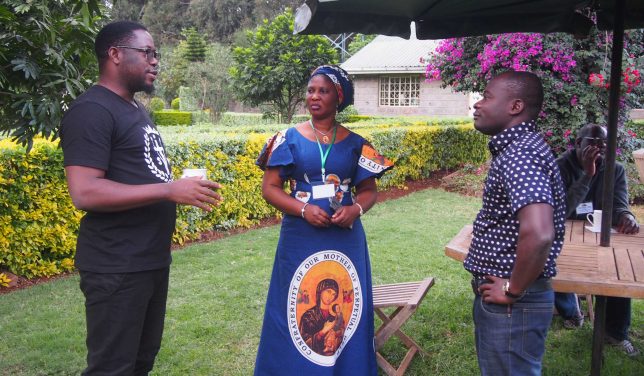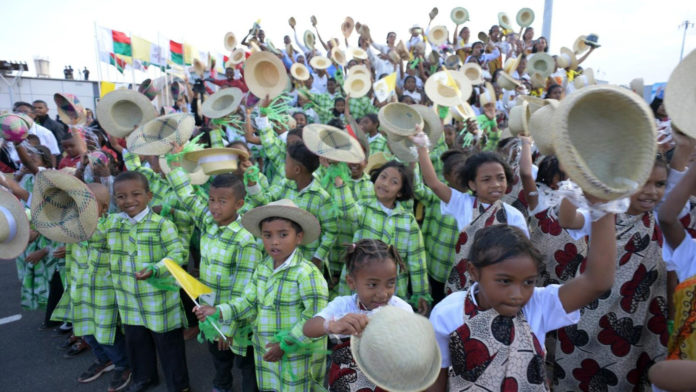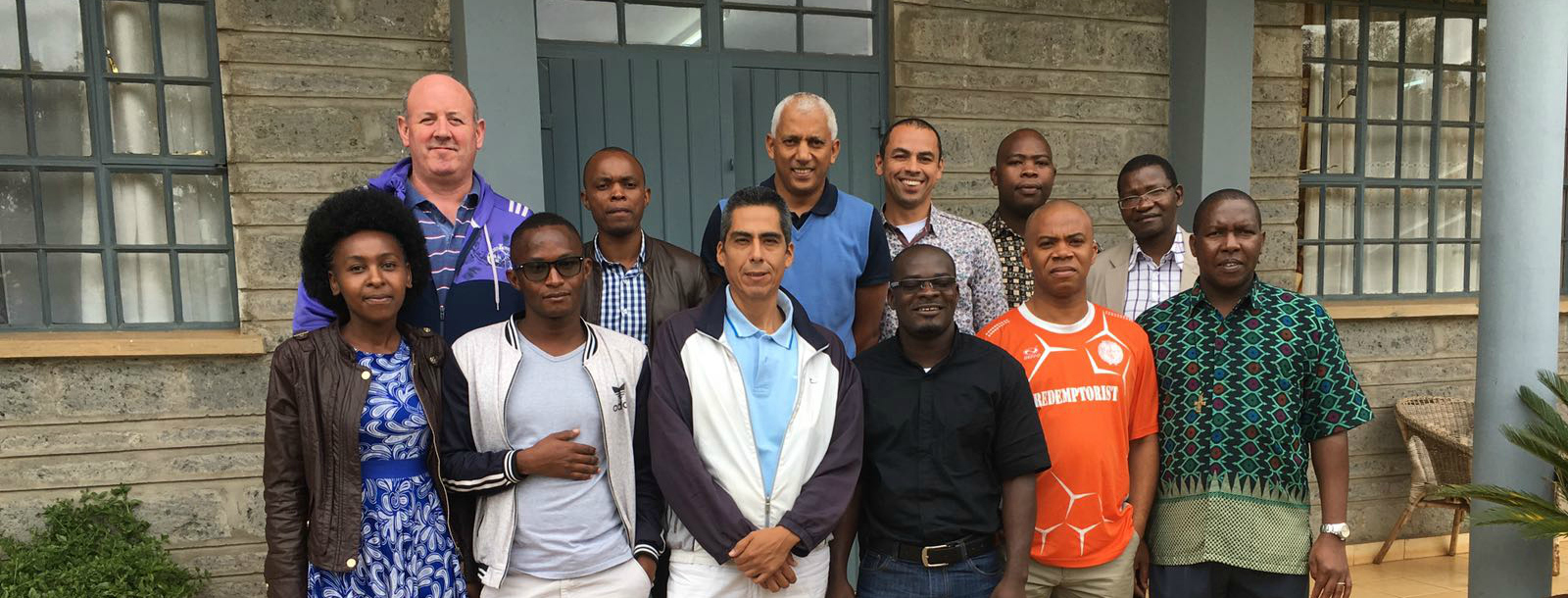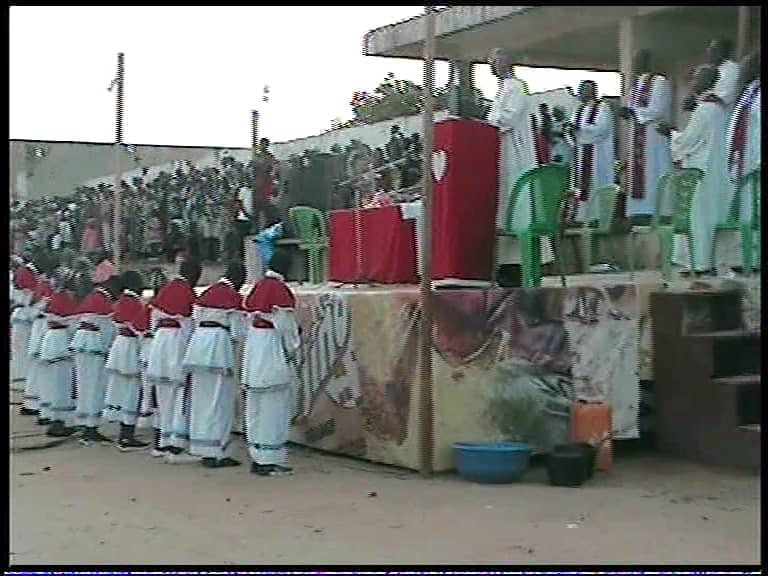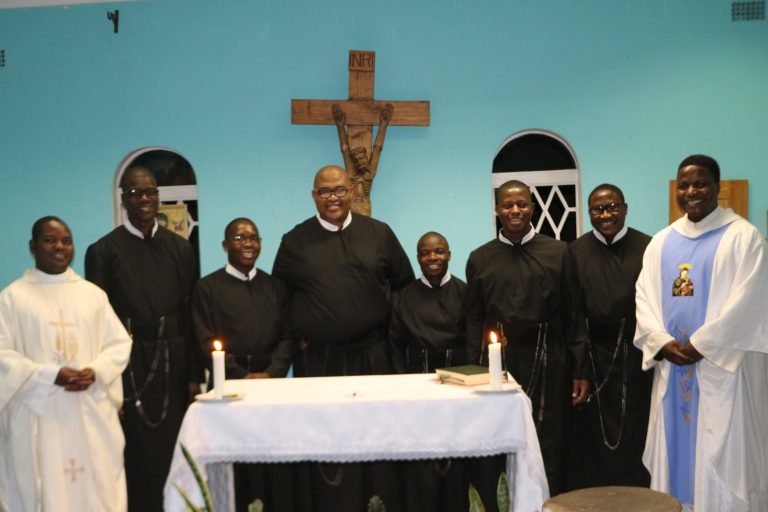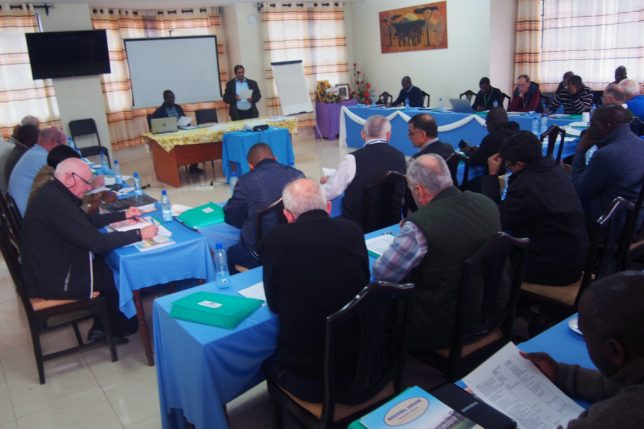
(Nairobi, Kenya) The Mid-Sexennial meeting of the Conference of Africa-Madagascar was held from July 31 to August 7, 2019, at Donum Dei Center, Nairobi, Kenya.
The Very Rev. Fr. Michael Brehl, the Superior General, Rev. Fr. Nicolas Ayouba, the Consultor General attended the meeting along with Fr Zephrin the Conference Coordinator and 22 confreres who are the members of the Africa-Madagascar Assembly. So too was the COREAM Lay representative, the Vice-Economo General and two Notaries. Prior to this meeting, there was the Networking meeting with the Major Superiors of Mother Provinces of Africa-Madagascar. Fr. Zephirin welcomed the confreres to the seven days meeting.
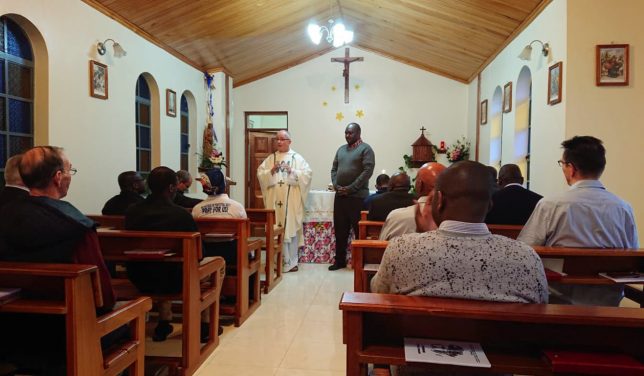
Fr. Michael Brehl the Superior General explained the reason and purpose of the meeting. He took us down the history of the Mid-Sexennial meetings. “The General Chapter of 1991 mandated the General Government to organize meetings in six Regions to help with the implementation of Chapter decisions. For the first time in 1994 meetings were held in 6 Regions. There was an evaluation of the Congregation and its statistics in a scientific manner. In the changing situation of the Congregation, there was a necessity for restructuring. Collaboration and reconfiguration were needed and so too was common formation. Thus we can speak of the reconfiguration process as having begun in 1991.
The second Mid-Sexennial meeting was held in 2000. Its main concern was economic and personnel solidarity. Out of that meeting, several initiatives were born, for example, the Spirituality Centre and Reflections on the Constitutions (Charism 2000). The need for common formation was much emphasized at this meeting.
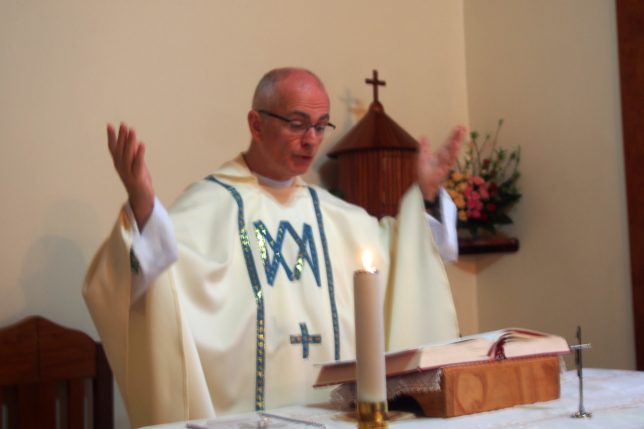

In 2006 the 23rd General Chapter mandated the creation of a Commission for Restructuring. The Commission presented six principles and three models of restructuring. In 2012 there was a Conference meeting to consider the apostolic priorities, common formation and a manual for finances and administration in COREAM. Africa and Madagascar was the first Conference to have it’s manual approved.
Fr. General said we must now look at restructuring in the light of the apostolic plan. This involves the question of the economy, formation, leadership and shared mission. We also need to make concrete strategic plans during this meeting.
The theme of the Sexennium:
“Witnesses of the Redeemer: in solidarity for mission to a wounded world.”
In the light of this theme focus at this meeting is on the Apostolic and Reconfiguration plans. It has been a long process to get them ready. Now that the two documents are ready the challenge is to concretize them.
The COREAM Apostolic Plan
Certain additions were suggested to the COREAM draft of the Apostolic Plan that was worked out by the Restructuring Commission. With the new suggestions effected in the members endorsed the Apostolic plan.
General Commission for Africa and Madagascar as part of the General Secretariat for Evangelization:
Fr. Nicolas presented the report on the General commission for Africa and Madagascar as part of the General Secretariat for Evangelization. The General Government, in response to the concerns expressed during the Canonical Phase of the XXV General Chapter, created the General Secretariat for Evangelization. The purpose of the Secretariat is to act as an instrument of coordination of the evangelizing activities of the Congregation, facilitating communication between the Units and the Conferences in the field of evangelization, and coordinating common activities.
The General Commission for Africa and Madagascar was created as a result of the decisions of the 24th and 25th General Chapters. In the last Chapter, it was said that Africa and Madagascar are a priority for the whole Congregation.
The COREAM Restructuring Process:
On the third day, we discussed the COREAM restructuring process. The COREAM Assembly held in Lagos (2017) proposed 5 new provinces for the Anglophone group and 3 new provinces for Francophone group. After the General Visitations and Assemblies, the COREAM Assembly in Nairobi 2018 proposed the creation of three big Provinces and voted the reconfiguration plan as a working document. The proposed Provinces were:
- SOUTHERN AFRICA: South Africa, Zimbabwe, Kenya and Madagascar.
- CENTRAL AFRICA: Congo, Angola and Mozambique.
- WEST AFRICA: Nigeria, Afrique de l’Ouest and Ghana.
After the 2018 Assembly, the Units of COREAM were asked to reflect on the proposed maps and share their feedback. Two units proposed to create two big Provinces instead of three:
- WEST AFRICA PROVINCE: Nigeria, Afrique de l’Ouest and Ghana
- CENTRAL-SOUTHERN AFRICA PROVINCE with three Regions.
- South Africa, Zimbabwe and Kenya
- Congo and Madagascar
- Angola and Mozambique
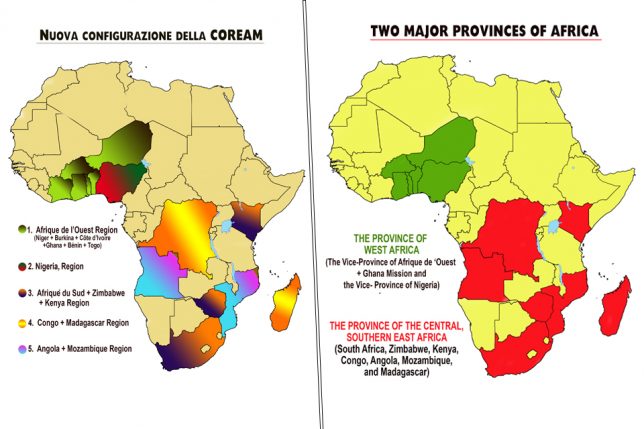
An explanation was given on the three different models in this process of Reconfiguration, namely: Fusion, Union and Federation. The members were asked to deliberate on what form of configuration was practical and on the model they preferred for Africa and Madagascar.
After discussions and common discernment, the 2019 Mid-Sexennial Meeting of COREAM agreed to create two big provinces.
- The West African Province has these units the Vice-Provinces of Afrique de l’Ouest and Nigeria with the mission of Ghana.
- The Central-Eastern and Sothern Africa Province. Its units are the Province of South Africa, the vice Provinces of Luanda, Matadi, Madagascar, the region of Zimbabwe and the missions of Kenya and Mozambique.
The West African group proposed that this new Province be a Union of the three existing units to form the new Province with two regions:
- Afrique del’Ouest and Ghana
- Nigeria
The Southern Central group of units suggested that the new province be a Union of the seven units to form a new province with three regions:
- Anglophone: South Africa, Zimbabwe and Kenya.
- Francophone: Matadi and Madagascar
- Lusophone: Luanda and Mozambique
The model for Configuration will be that of Union. In 2022 each proposed Province will evaluate the steps taken and see if they are ready to inaugurate the new Provinces in 2023. Until the new configuration is firmly established we request the Mother Provinces to support their respective units with finances and personnel. The collaboration among the units within the proposed regions is to be strengthened in common mission projects, exchange of personnel and common formation. Contracts will support this collaboration.
With the configurations and models having been cleared an indicative vote. This was then followed by a definitive vote. The result was overwhelming as all 23 delegates voted in favour of the new configurations and models.
Fr. General appreciated the willingness to embrace the new configuration of Africa and Madagascar: “The step you have taken today is historical and very important.” He assured the delegates that the General Council will take seriously this step during its meeting in December”.
The other subjects discussed at this meeting were:
The Manual for administration and financial affairs, Directories of Superiors and Chapters, Directory for Shared Mission, restructuring of the Academia Alfonsiana, Commission for Brothers, Plan of community life (PCL), Policy on Child safeguarding and protection and preparation of the 26th General Chapter in 2022.
Continuing Formation in Gospel Stewardship and Financial Management
Each Conference will hold a Seminar on “Gospel Stewardship and Financial Management” as soon as possible after the completion of the Manual for Administration and Financial Affairs and the Internal Audit Plan. Subsequent to the Conference Seminar, the government of each Unit will facilitate (perhaps in conjunction with other Units) a Seminar/Workshop for Community Treasurers and others involved in financial administration.
The Philosophy behind this is the four Missionary Principles, namely:
- The Resources of the Congregation are at the Service of Mission.
- We live simply and generously in Solidarity with the Poor.
- Managing our Resources with Integrity is part of our Witness to Missionary Solidarity.
- Leadership and Governance Strengthen and Deepen Missionary Solidarity at all levels.
The Manual offers general administrative objectives, policies, and procedures which are broad enough to encompass most situations while still offering significant guidance in any environment.
Fr. Gerry presented Financial Systems, Policies, Procedures, Practices, Software. He gave a realistic picture of COREAM Capacity Development project. The Solidarity Office and its team of mentors are willing to offer workshops and help implement financial systems and software in Units.
Alphonsian Academy Commission’s work
Fr. General presented the work on behalf of the Commission. He spoke about the Alphonsian Academy (AA). He spoke about the three decisions of the last General Chapter regarding the Academy, namely, Moral theology as a priority and a common apostolate of the Congregation, External evaluation and governance of the academy. A Commission was appointed to work on these. The result of the Commission’s work so far is:
- Civil recognition of AA requires choices of a technical nature and administrative nature.
- Revision of Statutes in the line of the guidelines of the Congregation for Catholic Education.
- The Holy See approves the Statutes of the AA
- Legal and ecclesial developments need to harmonize present proposals with the Decisions of the XXV General Chapter.
Communication strategic plan of the Congregation.
Fr. Nicolas Ayouba said that the General Government in response to Decisions 13 and 37 of the XXV General Chapter has commissioned the Communications Commission to develop a strategic communication plan at the level of the Congregation. This plan should then be adapted and customized by each of the Conferences and units. Each of the five conferences of the Congregation will appoint a confrere who will then assume responsibility for the Communication Needs of the Conference and act as a direct link or liaison person with the Units of the Conference and the Office of Communications of the Congregation. He will also be available to work with the various Formation Programs of the Conference to ensure that future Redemptorists are equipped, to avail the evangelizing possibilities of various forms of new media.
The Directory For Partnership in Mission
Fr. Nicholas presented on the Directory For Partnership in Mission. The purpose of the presentation was three-fold:
- To introduce and review the draft General Directory for Partnership in Mission.
- To underline the importance of, and to build, a more unified and consistent approach to partnership in and for mission across the Congregation.
- To receive feedback that will be incorporated into the final version of the General Directory for Partnership in Mission
The Directory would describe the profile of the Redemptorist laity, in all its diverse expressions and address their duties, rights, responsibility and forms of affiliation.
The work of the General Commission for Brothers
Brother Leon presented a report on the General Commission for Brothers. He shared the challenges and the hopes that are faced by those who embrace the vocation to the brotherhood. It was the decision of the General chapter to come up with a commission for brothers. The commission is to analyze the current situation of brothers and to define the roles of brothers in the congregation. Constitution 55 gives a clear identity of the brothers. The spirit of clericalism has influenced even the faithful in their understanding of religious life. This makes it difficult to promote the vocation to the brotherhood. More attention is given to those who want to become priests. There are few brothers who are members of the formation teams. In general, there is no good program for the formation of brothers. There are changes in the congregation where brothers are now being taken to university for studies. There are some units where brothers are members of councils and now we even have brothers in the general chapter. It is important to recognize the identity of the brothers. Br Leon urged Units to reflect on the promotion of brothers.
Fr. General gave a background that could be traced back to a time of Falcoia who was not in favour of brothers in the congregation, however, Falcoia and St. Alphonsus disagreed on this. In the first chapter of nine members of the Congregation, there were four brothers and four priests. In 1965, 30% of the Congregation’s members were brothers but today less than 8% are brothers. In Africa and Madagascar, only 4% are brothers.
After group discussions there was an indicative vote for the document: all the 23 delegates voted to adopt the document as a working document.
Child Safeguarding and vulnerable adults:
The Sixth Day began with a presentation by Fr. Gerry on Child Safeguarding and vulnerable adults. The General Chapter (Dec. 28) mandated every Unit in the Congregation to prepare a policy for the safeguarding of minors and vulnerable adults, as well as a protocol for dealing with allegations when they are raised.
Further Clarification on the situation in the Church:
Fr. General clarified that when we talk about sexual abuse of minors, we are talking about any sexual relationship with a minor. The Church universally says a minor is anyone below the age of 18. We need to have a common policy and protocol at the level of the Congregation. We have to be careful, to listen well and not interrogate those who want to raise issues of abuse. Care for the victims of abuse wherever they have been abused is paramount. There is a need to reach out to those who are abused. In the new documents, any abuse by a religious must be reported to the Superior General. Even cases that are investigated and in the end are judged as not true have to be reported. Any Major Superior who does not report to the Superior General deserves to be relieved of his office.
The challenge is that as COREAM we train someone to be responsible for this area. It helps to note that abuse takes many forms. Confreres must be made aware of this.
For the Redaction commission
Fr. Paul PAZHANGATTU
Fr. Tryvis MOYO
